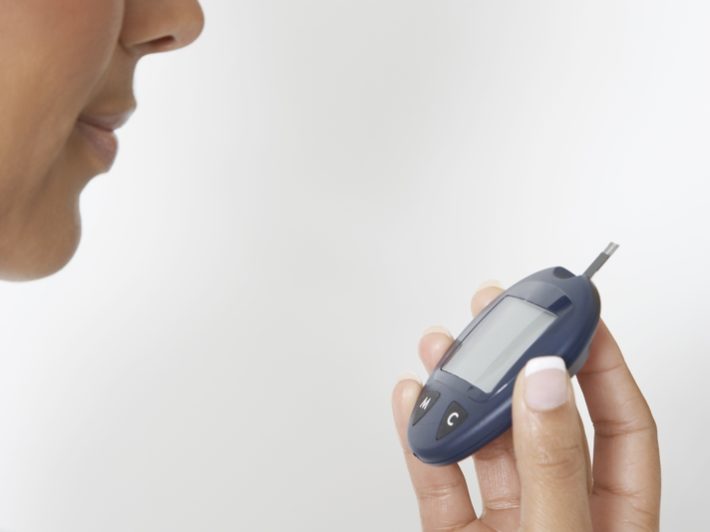
by Bianca Garilli, ND
The World Health Organization (WHO) estimates the total number of people living with diabetes in 2014 was 422 million, equal to approximately 8.5% of adults worldwide– a majority of whom were diagnosed with type 2 diabetes (T2D). These figures are a staggering increase from the estimated 108 million people, globally, who were diagnosed with diabetes in 1980!1 The United States does not fare any better. According to the Centers for Disease Control and Prevention, 29.1 million people or 9.3% of the US population has diabetes including both diagnosed and undiagnosed estimates.2
It is well known that long term elevated blood sugar levels found in uncontrolled type 1 (T1D) and type 2 (T2D) diabetes leads to damaging and often fatal effects; cardiovascular disease (CVD) being one of the most frequently experienced negative outcomes. In fact, The American Heart Association considers diabetes to be one of the seven major controllable risk factors for CVD, the other modifiable risk factors include: elevated blood pressure, abnormal cholesterol, cigarette smoking, obesity, physical inactivity and poor diet. In the United States, adults with diabetes are two to four times more likely to die from heart disease than adults without diabetes accounting for 68% of deaths in people over the age of 65 with diabetes with 16% of that population dying from stroke.3
Key Points
Due to the very high prevalence of CVD and subsequent risk of mortality in those patients who present with comorbid diabetes, it is especially important to have a reliable method for CVD risk detection and assessment in this population. One such method is to measure visceral fat accumulation which is often seen on clinical exam at increased levels typically in conjunction with obesity, diabetes, dyslipidemia and/or hypertension. Visceral fat, found intra-abdominally, is known to increase CVD risk in both obese and non-obese patients with T2D. Measuring visceral fat is one way to track risk of CVD and can be performed by bio-electric impedance analysis (BIA) which is non-invasive and low cost.4 An increase in visceral fat can lead to an increase in BMI; thus BMI is often used as a marker to indicate increasing risk of CVD. However, BMI can also increase when subcutaneous fat increases– even if visceral fat quantity remains the same.
Subcutaneous fat is fat stored directly below the surface of the skin. This type of fat may not be as harmful as the accumulation of visceral fat and, quite possibly, may confer some health benefits in those with elevated visceral fat deposition.5 Although exact mechanisms have not been completely elucidated as to how subcutaneous fat is protective, the current thought is that this type of fat contains “beige” cells which are responsible for changing the interactions in pathways responsible for improving system metabolic dysfunction frequently seen in obesity.
With the understanding that BMI can increase due to an increase in either visceral or subcutaneous fat the question arises on whether knowing the ratio of visceral to subcutaneous fat could lead to improvement in CVD risk assessment in those with diabetes and potentially be a better marker than BMI levels alone.
A retrospective observational study by Tatsuya Fukuda and his research team aimed to investigate whether the ratio of visceral fat area (VFA) to subcutaneous fat area (SFA) or visceral fat to subcutaneous fat (V/S) ratio could be predictive of CVD as compared to VFA or SFA alone in patients with diabetes.4 They enrolled 682 patients with T2Dand a mean age of 64 years. VFA and SFA were measured with BIA and patients were tracked for 2.5 years to determine the number of first occurrences or reoccurrences of CVD episodes in the group. CVD episodes were defined as stroke, unstable angina, myocardial infarction (MI), percutaneous coronary intervention (PCI), coronary bypass grafting (CABG), angioplasty or major amputation due to peripheral arterial disease (PAD) or cardiovascular death.
The findings from this study revealed that V/S ratio as measured by dual BIA is an independent predictor of CVD in patients with T2D. Elevated V/S ratio was found to be significantly associated with an increased risk for CVD and was determined to be a better predictor of CVD in T2D population than VFA, SFA or BMI alone. This finding was based on previous data indicating that SFA may be protective against elevated VFA and that BMI does not distinguish between VFA or SFA composition.
Why is this Clinically Relevant?
- Diabetes is a worldwide epidemic affecting nearly 8.5% of the world’s adult population
- Diabetes is one of seven modifiable risk factors leading to CVD
- CVD accounts for 68% of deaths in patients with diabetes over the age of 65
- CVD risk can be determined through the ratio of visceral fat area to subcutaneous fat area as measured by dual BIA and independently of BMI
- V/S ratio is a better predictor of CVD risk in T2D population than BMI or visceral fat or subcutaneous fat measurements alone
Citations
- WHO. Diabetes. http://www.who.int/mediacentre/factsheets/fs312/en/. Accessed July 26, 2017.
- CDC. National Diabetes Statistics Report. https://www.cdc.gov/diabetes/data/statistics/2014statistics-report.html. Accessed August 9, 2017.
- AHA. Cardiovascular Disease and Diabetes. http://www.heart.org/HEARTORG/Conditions/More/Diabetes/WhyDiabetesMatters/Cardiovascular-Disease-Diabetes_UCM_313865_Article.jsp/#.WXkYW4jyvIU. Accessed July 26, 2017.
- Fukuda T, Bouchi R, Takeuchi T, et al. The ratio of visceral to subcutaneous fat area predicts cardiovascular events in patients with type 2 diabetes. J Diabetes Investig. 2018;9(2):396-402.
- Porter S, et al. Abdominal subcutaneous adipose tissue: a protective fat depot? Diabetes Care. 2009;32(6):1068–1075.



